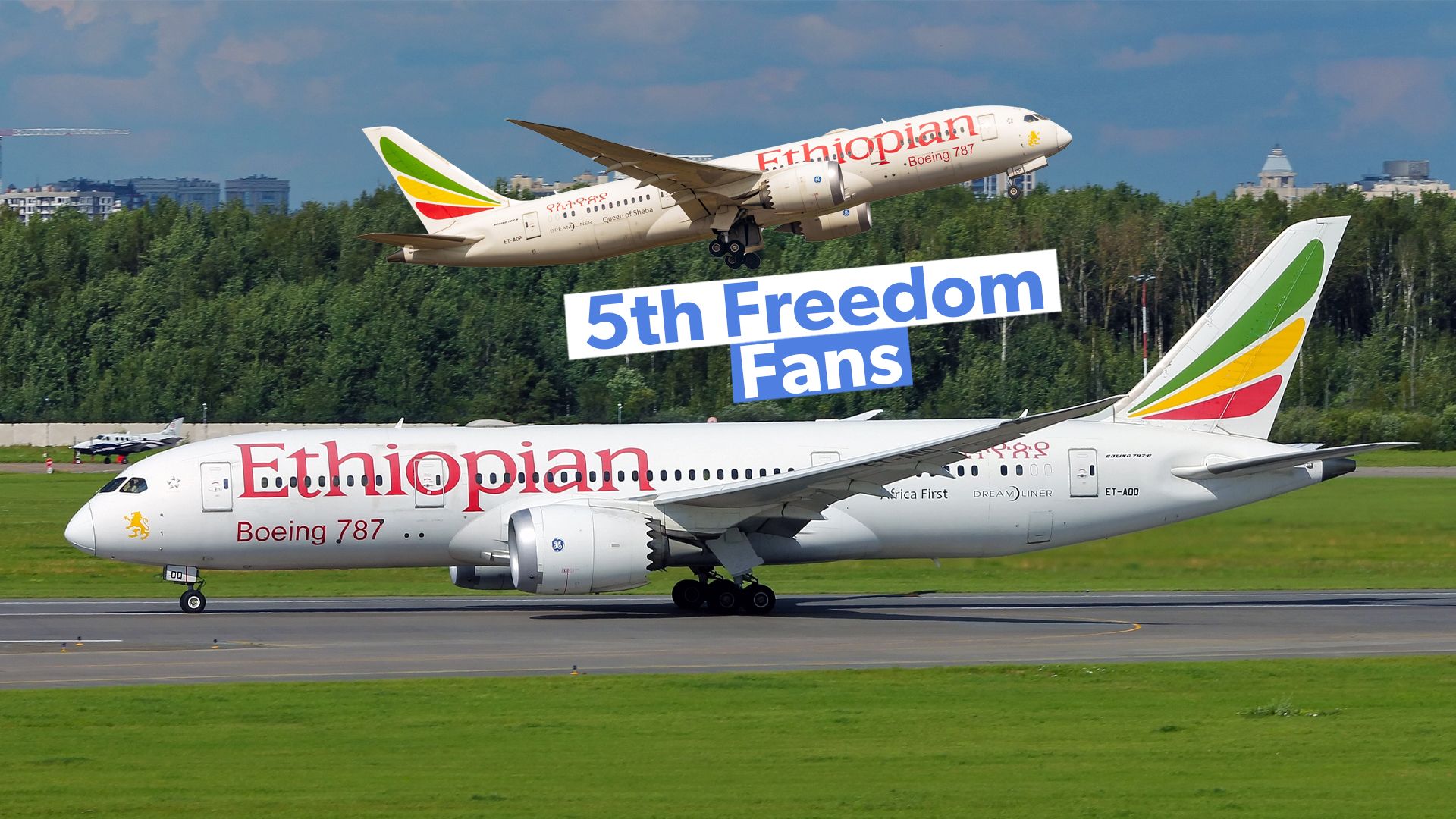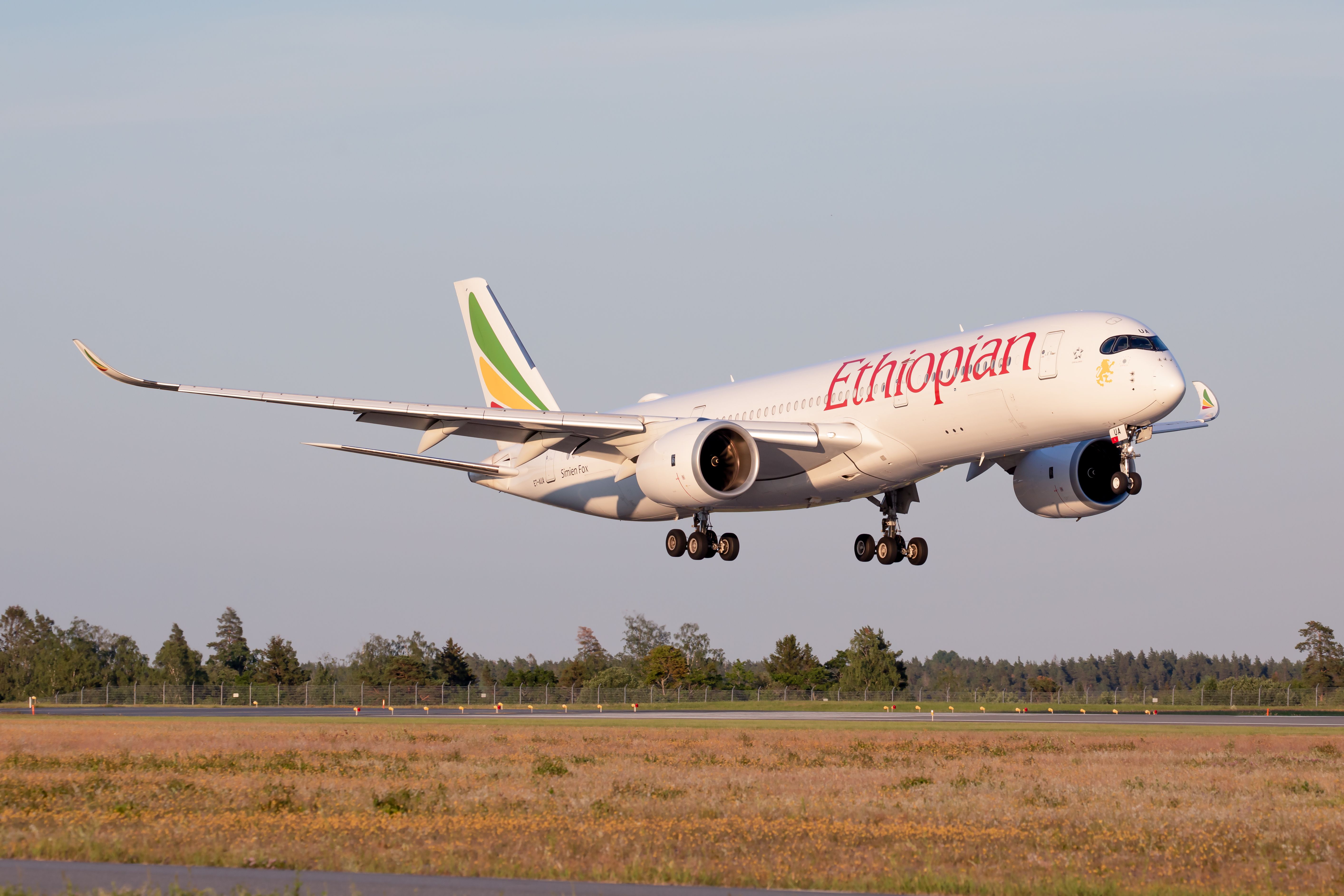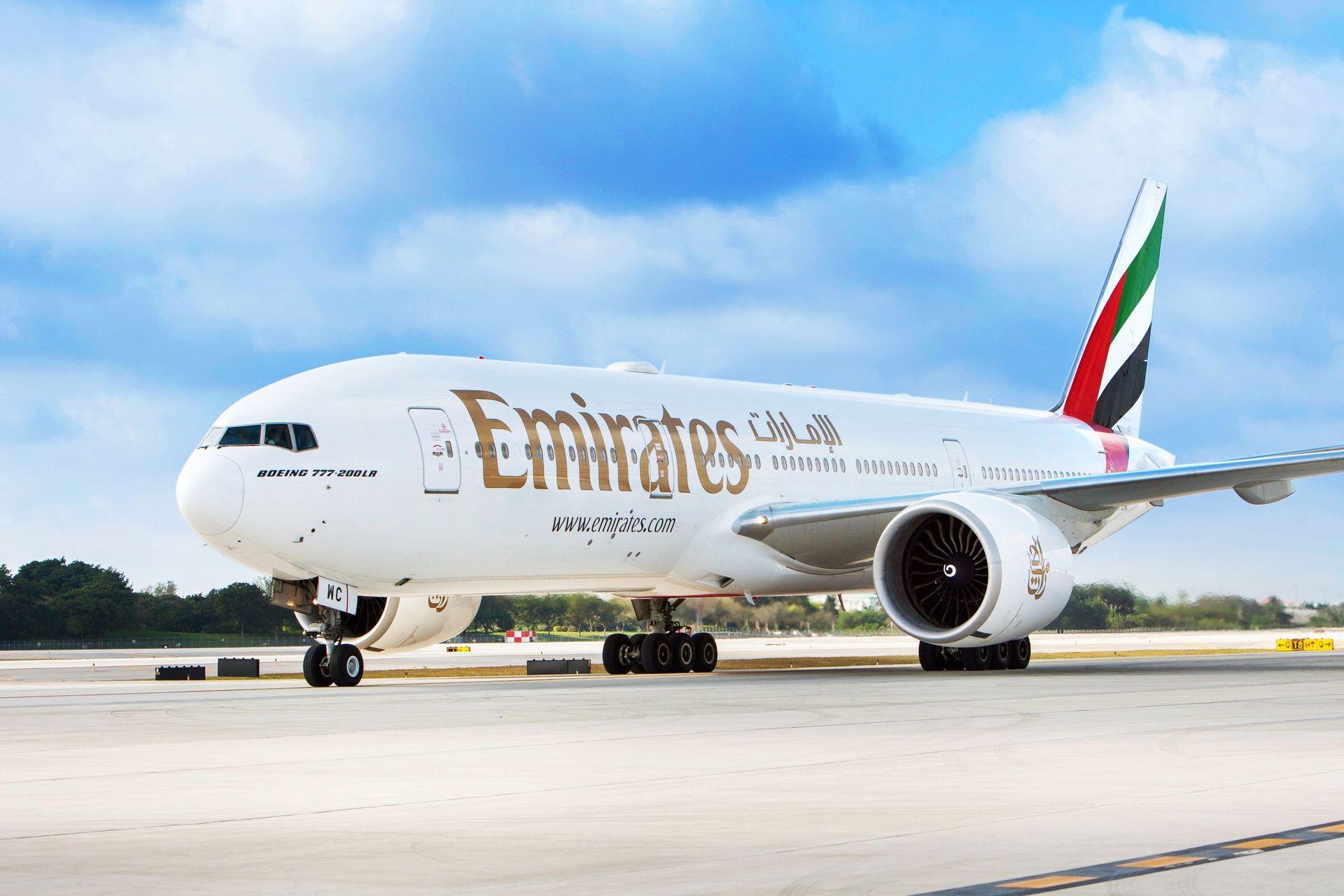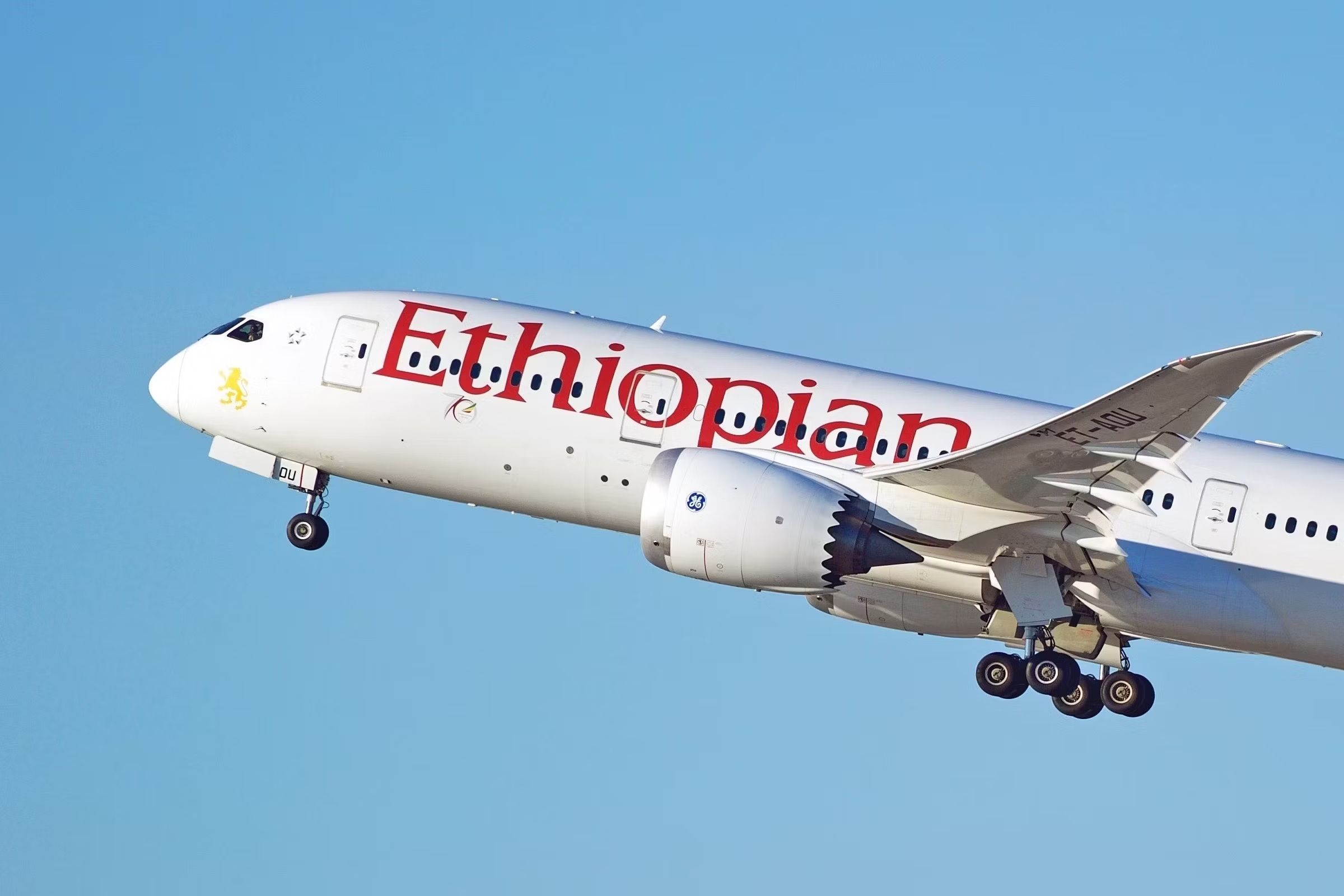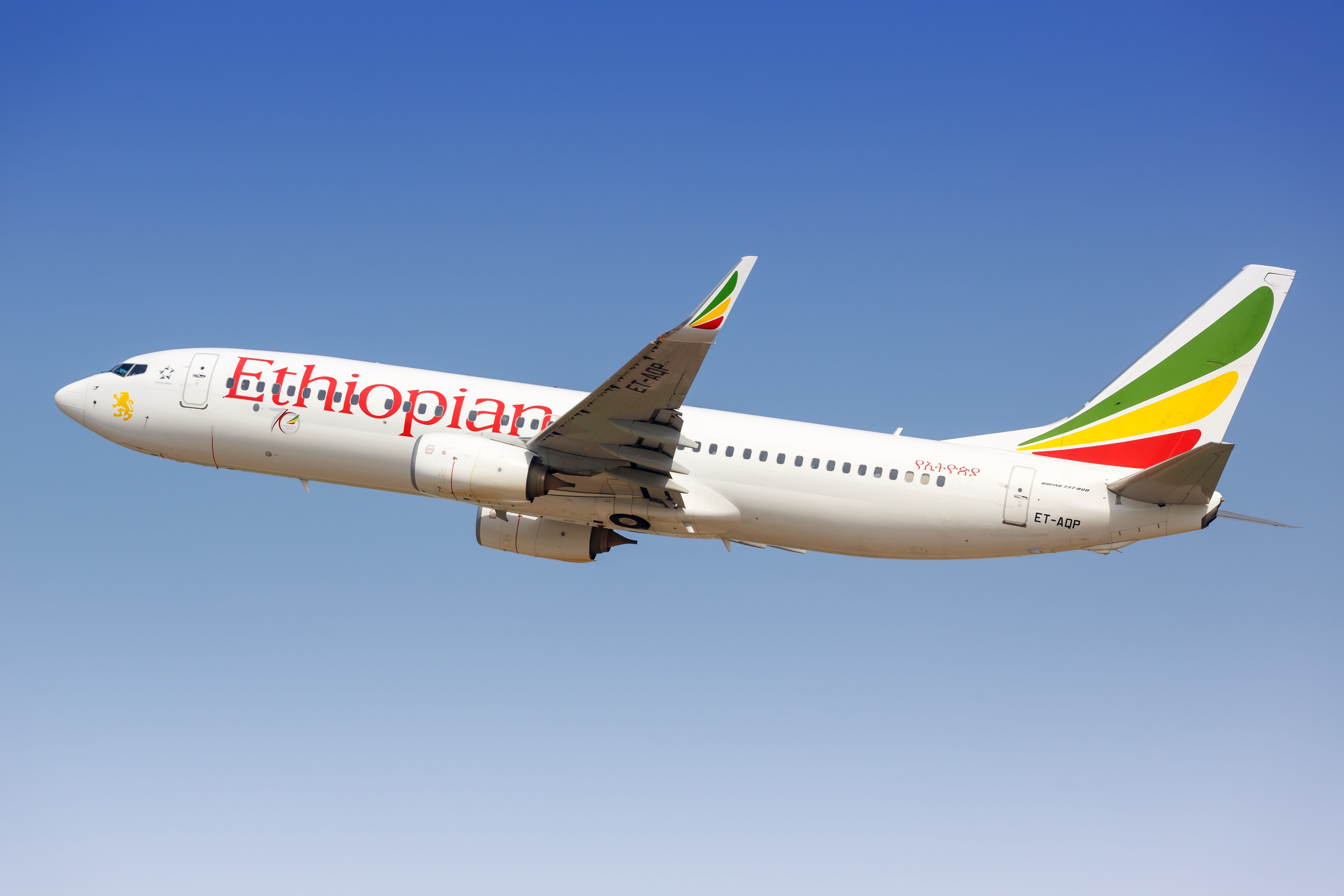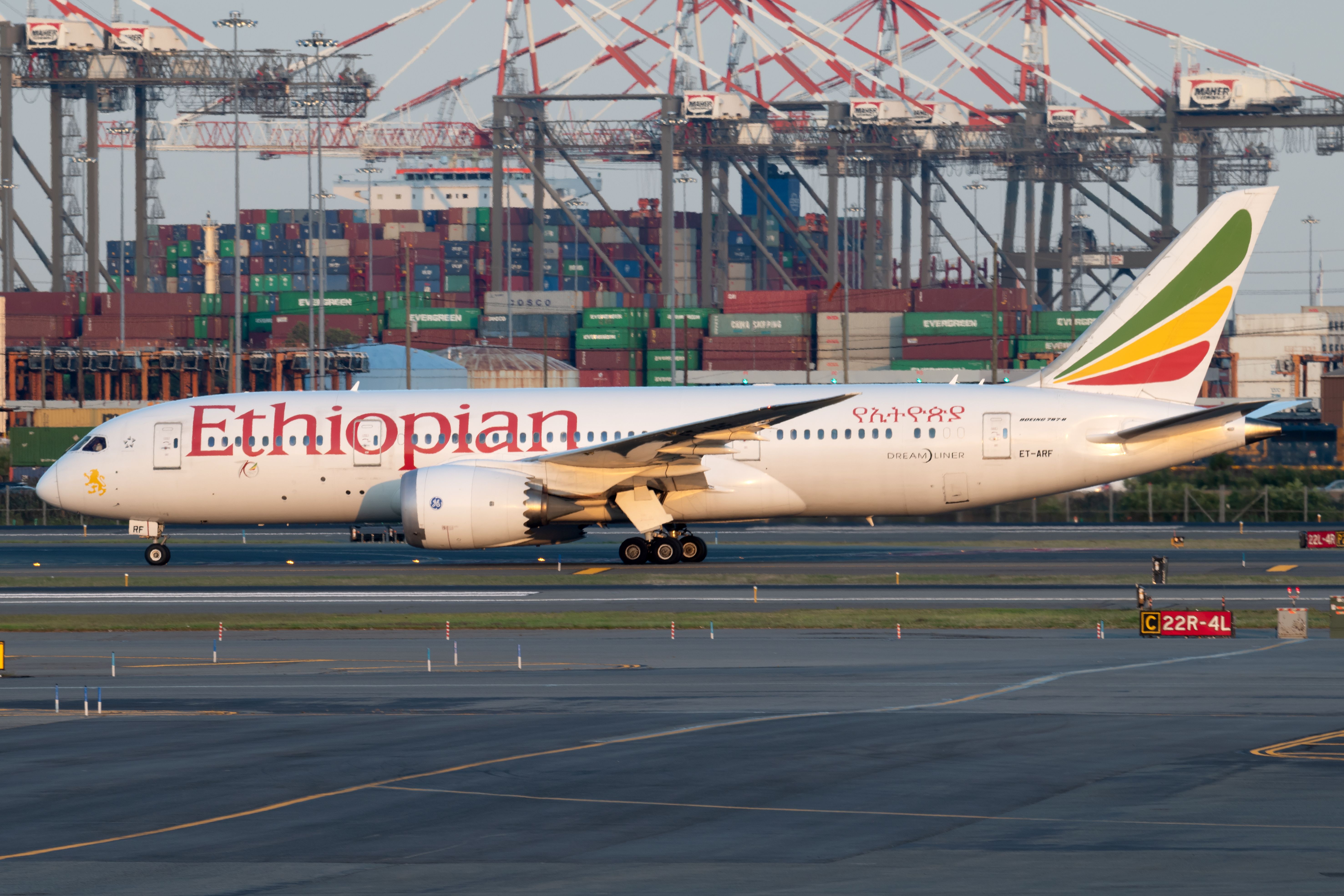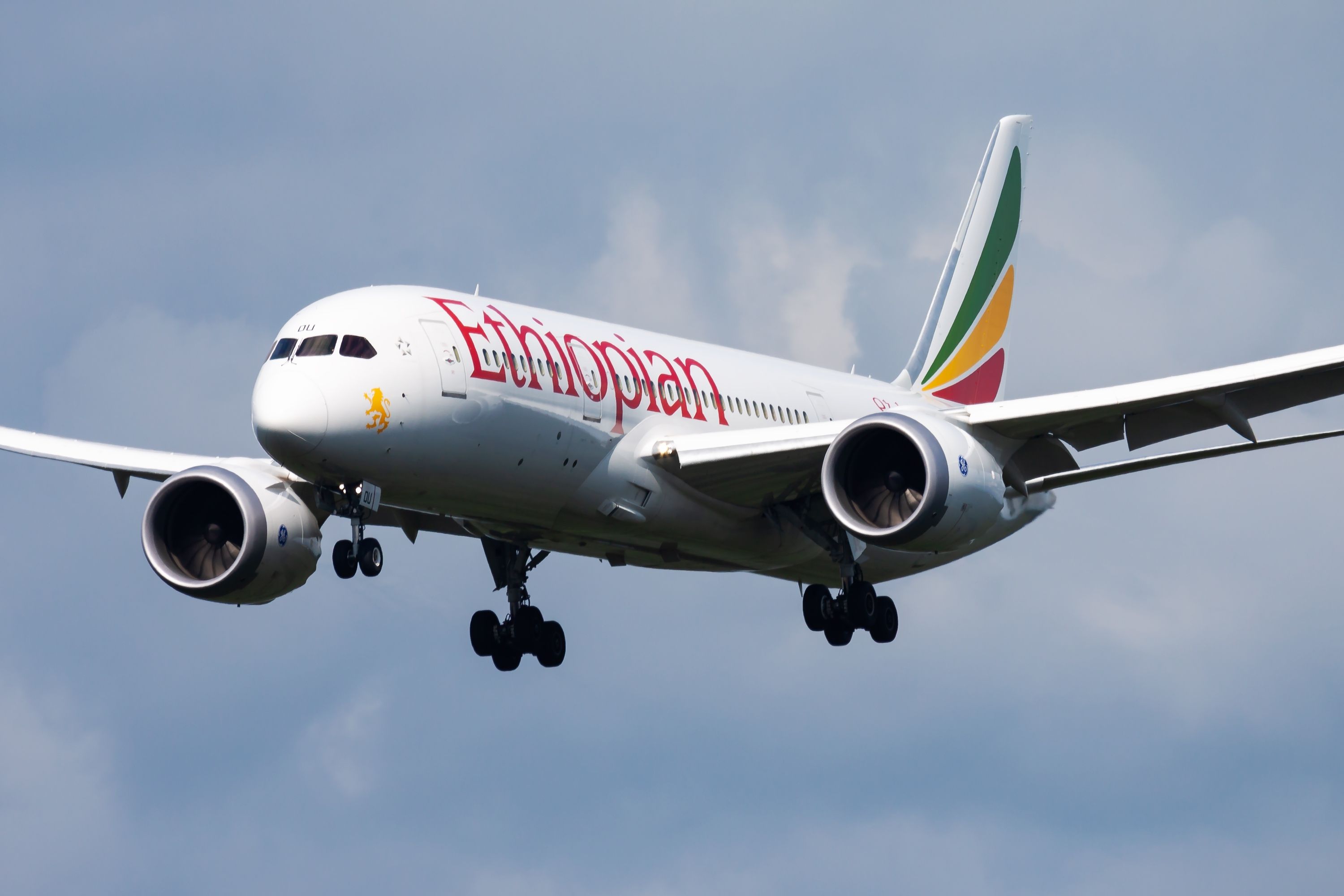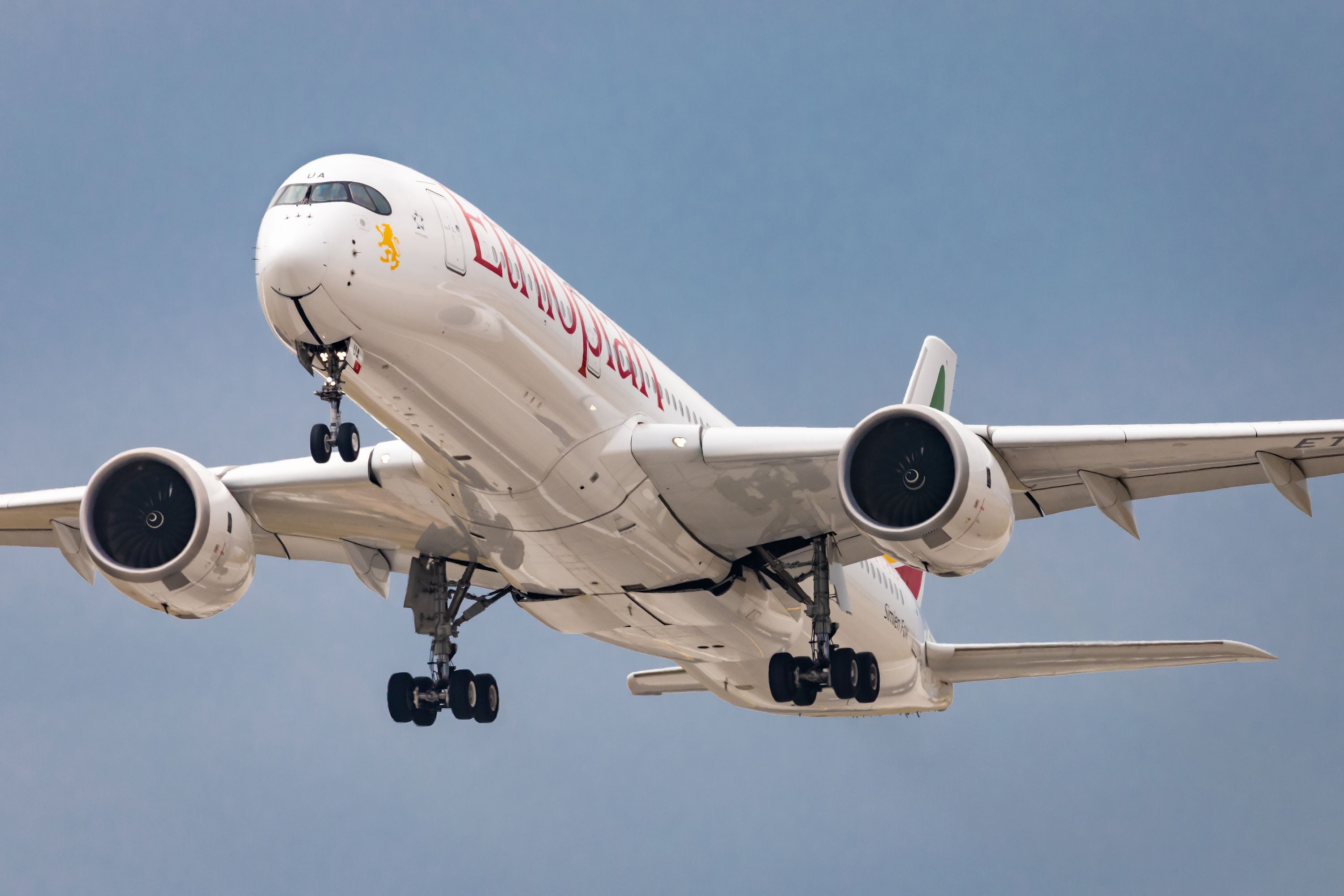Savvy travelers know that fifth-freedom flights can be a great way to reach their destination. They offer several benefits, usually combining a higher level of service on larger aircraft with reduced rates to compete with local carriers. With nearly 220 fifth-freedom flights in operation today provided by 68 different airlines, there is also a diverse and interesting array of options to choose from.
Photo: Flypix | Shutterstock
When we think of the leader in fifth-freedom flights, many of us think of Emirates, which has several high-profile routes such as New York to Milan and Barcelona to Mexico City. However, one carrier is the undisputed leader in fifth-freedom flights, with more than 10% of all fifth-freedom flights on offer: Ethiopian Airlines.
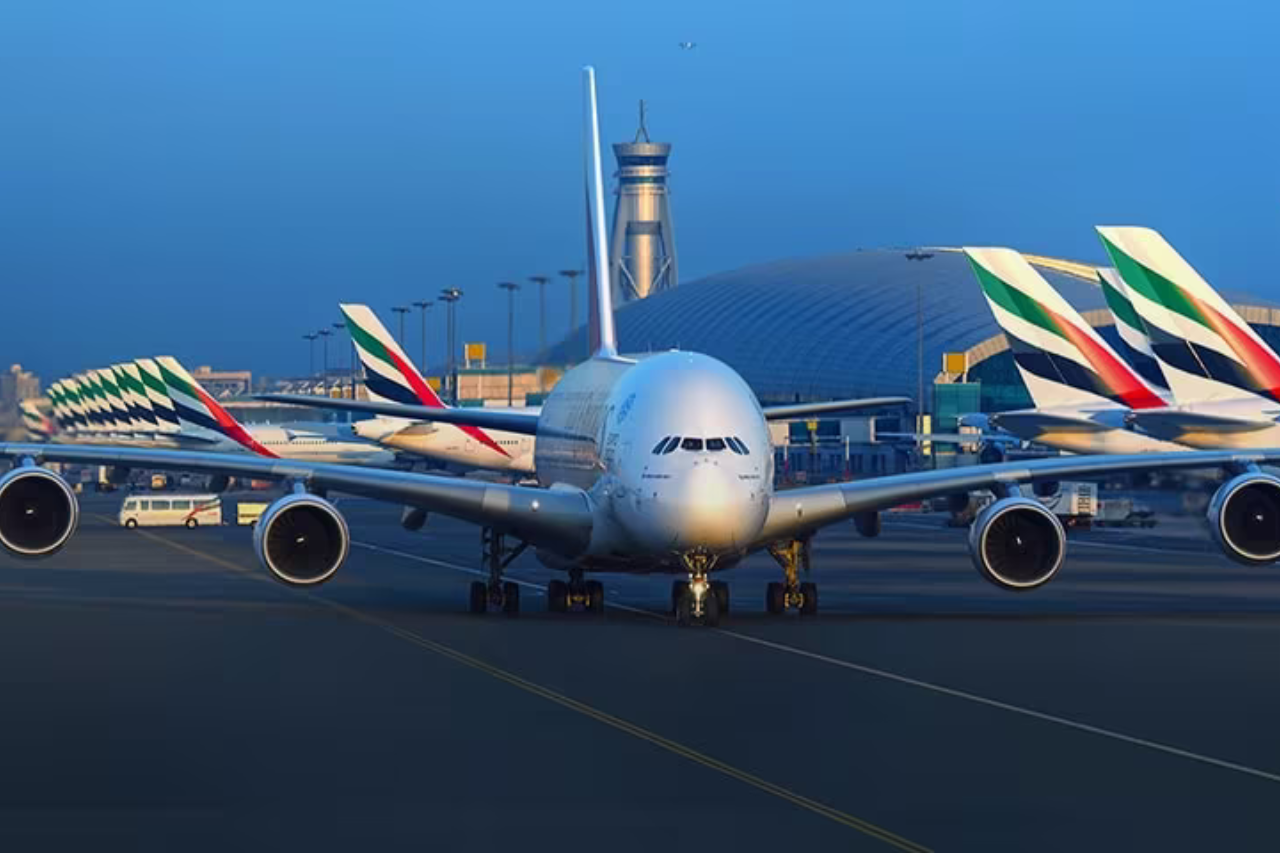
Related
Emirates’ Fifth Freedom Routes – An Ultimate Guide
Linking several cities around the world, offering passengers a chance to fly on Emirates aircraft without having to transit in Dubai.
What are fifth-freedom flights?
The freedoms of the air, laid down in the Chicago Convention of 1944, are designed to facilitate the movement of people and goods across borders in aircraft. The fifth freedom is the right granted by one State to another State to put down and to take on, in the territory of the first State, traffic coming from or destined to a third State. In the Emirates example from above, Italy has granted the UAE the right to board and fly passengers between Milan and New York, even though Emirates is not domiciled in either country.
Photo: Emirates
Fifth-freedom flights are distinct from other flights that might look similar, but where the carrier doesn’t have fifth-freedom rights issues by the state. These are:
- Dogleg routes: Where an airline flies from its base in Country A to Country B, and from there to Country C, and then returns along the same path. Without fifth-freedom rights, the airline doesn’t have the right to sell tickets between B and C. For example, Brussels Airlines has a substantial business with its A330s in sub-Saharan Africa, and one route is a daily flight to Dakar. From there, the aircraft departs to Conakry before returning via Dakar to Brussels. Because it doesn’t have fifth-freedom rights, passengers can only be ticketed between Brussels and Dakar or Brussels and Conakry, but not between Dakar and Conakry.
- Triangular routes: Where an airline flies from its base in Country A to Country B, and from there to Country C, and then returns to Country A directly. A good example is Air France, which operates a Paris-Abuja-N’Djamena-Paris triangular route. It can sell tickets between Paris and either Abuja or N’Djamena, but not between Abuja and N’Djamena.
Photo: Philip Pilosian | Shutterstock
The leaders in fifth-freedom flying
There are ten airlines that currently operate five or more fifth-freedom flights, and Ethiopian Airlines is top of the pile, ahead of Emirates.
|
Airline |
Number of 5th freedom flights |
|
Ethiopian Airlines |
22 |
|
Emirates |
15 |
|
Kenya Airways |
12 |
|
Batik Air |
9 |
|
British Airways |
9 |
|
United Airlines |
9 |
|
Rwandair |
8 |
|
Turkish Airlines |
8 |
|
Gulf Air |
5 |
|
Nauru Airlines |
5 |
Notably, two other African airlines, Kenya Airways and Rwandair, are in the Top 10 list. This indicates how the larger market players on the continent are using their growing presence to provide greater connectivity between historically underserved destinations. In addition:
- United Airlines makes the list due to its ‘Island Hopper’ service, which flies from Honolulu to Guam, making stops at five small islands en route.
- British Airways has a long-standing Singapore-Sydney fifth-freedom route, but the remainder of its fifth-freedom flights connect destinations within the Caribbean.
- Batik Air has several fifth-freedom connections from Taipei, while its Malaysian operation connects Denpasar to multiple Australian cities.
- Turkish Airlines has half of its fifth-freedom flights in Africa, and also connects through São Paulo to Buenos Aires and Santiago.
Analysis of Ethiopian Airlines’ fifth-freedom routes.
Ethiopian Airlines is the largest airline in Africa, so it’s unsurprising that more than half of its 22 fifth-freedom flights occur on its home continent. But it also has ten notable routes in other parts of the world, often facing intense competition. Let’s take a closer look:
The Africa routes: Serving the underserved.
|
Route |
Aircraft |
Competitors |
|
Harare – Lusaka |
A350-900 |
Air Tanzania, Emirates, Kenya Airways, LAM, Qatar Airways, Rwandair |
|
Bamako – Dakar |
B777-200LR |
Air Senegal, FlexFlight |
|
Blantyre – Johannesburg |
B737-800 |
Airlink |
|
Kigali – Bujumbura |
B737-800 |
Rwandair |
|
Malabo – Douala |
B787-8 |
Afrijet, Air France, Benin Airlines, Cronos Airlines |
|
Lilongwe – Lusaka |
B737-700 |
– |
|
Lilongwe – Harare |
DHC-8 |
– |
|
Dar es Salaam – Blantyre |
B737-700 |
– |
|
Yaounde – Libreville |
A350-900 |
Afrijet |
|
Ouagadougou – Conakry |
B787-9 |
Turkish Airlines |
|
Abidjan – Conakry |
A350-900 |
Air Côte d’Ivoire |
|
Monrovia – Conakry |
B787-8 |
Air Côte d’Ivoire |
Ethiopian Airlines serves 12 African fifth-freedom routes using a variety of aircraft, from its flagship Airbus A350-900 to a De Havilland Canada DHC-8. In most cases, it is focused on central African countries like Malawi, Zimbabwe, and Zambia, where commercial air services are limited. It is opening routes that would not otherwise have air service or where the current air service is minimal or non-existent.
Photo: Boeing
However, it is not alone in this strategy of connecting underserved cities. The Harare-Lusaka route is particularly notable because it has seven competing airlines, all of them foreign carriers operating fifth-freedom flights. Indeed, Ethiopian Airlines competes with several global giants across its African routes, including Emirates, Qatar Airways, Air France, and Turkish Airlines.
Photo: Markus Mainka | Shutterstock
Americas routes: Building a transatlantic network
|
Route |
Aircraft |
Competitors |
|
São Paulo – Buenos Aires |
B777-200LR |
Air Canada, GOL, LATAM, Turkish Airlines, Swiss |
|
Lome – Newark |
B787-8 |
– |
|
Lome – Washington DC |
B787-8 |
– |
|
Abidjan – New York |
B787-8 |
– |
Ethiopian Airlines has been steadily creating a transatlantic network connecting West Africa to the US using its Dreamliner fleet. With all flights originating from its hub in Addis Ababa, it now connects Lome in Togo to Newark and Washington DC and Abidjan in Côte d’Ivoire to New York JFK. Neither city would have a US connection were it not for Ethiopian Airlines.
Photo: Vincenzo Pace I Simple Flying
It also provides a fifth-freedom service to Buenos Aires, which, like Harare and Lusaka, hosts seven different international airlines that all provide fifth-freedom flights (four arriving via São Paulo and three via Rio de Janeiro).
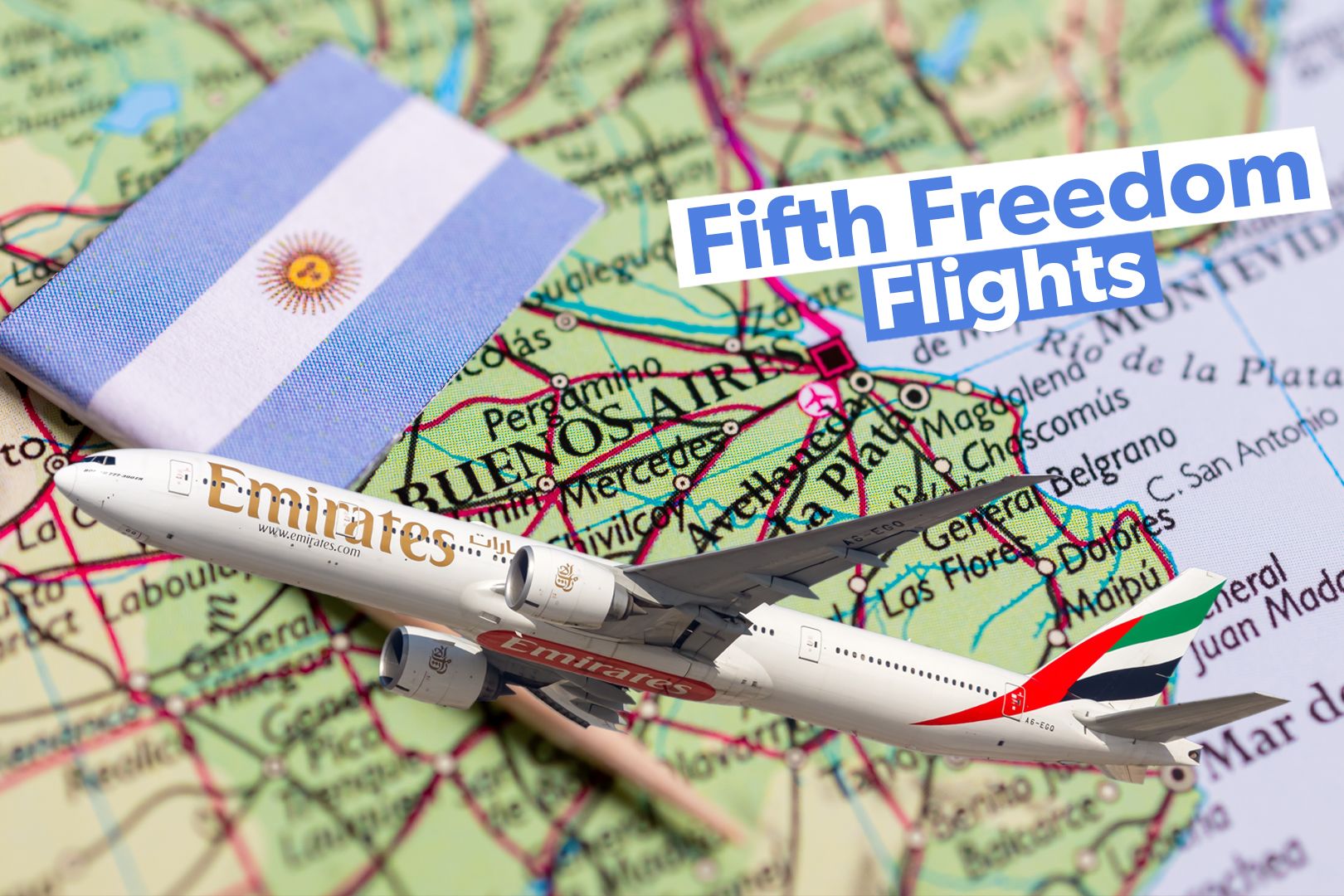
Related
Why Does Buenos Aires Have So Many Fifth Freedom Flights?
Buenos Aires sees an unusually high number of fifth freedom routes – what are they, and why are they so popular?
Asia Routes: In the face of fierce competition
|
Route |
Aircraft |
Competitors |
|
Singapore – Kuala Lumpur |
B787-9 |
Jetstar, Malaysia Airlines, AirAsia, Singapore Airlines, Batik Air, Scoot |
|
Bangkok – Hong Kong |
B787-9 |
Cathay Pacific, Emirates, Hong Kong Airlines, Hong Kong Express, Thai Airways, Greater Bay Airlines |
|
Seoul – Tokyo |
B787-8 |
Asiana Airlines, Korean Air, Air Busan, Eastar Jet, Jeju Air, Jin Air, T’Way Air, Air Seoul, ZIPAIR, Aero K, Air Premia |
Ethiopian Airlines only has three fifth-freedom routes in Asia, and all are highly contested routes with a minimum of six local market competitors, many of whom fly multiple daily flights. The Seoul-Tokyo route is one of the most trafficked air corridors in the world and has at least 11 competitors, depending on the time of year. Ethiopian Airlines competes by offering a superior widebody service at a price similar to that of the narrowbody LCCs on the route.
Photo: Soos Jozsef | Shutterstock
Europe Routes: Switzerland and Scandinavia
|
Route |
Aircraft |
Competitors |
|
Stockholm – Oslo |
B787-8 |
Norwegian, SAS, Icelandair |
|
Geneva – Manchester |
A350-900 |
easyJet, Jet2 |
|
Milan-Zurich |
A350-900 |
Swiss |
The Ethiopian Airlines route from Stockholm to Oslo has become legendary. It started over eight years ago to combine two cities that would otherwise be too small for individual direct flights, and its traveler-friendly timing has made it a firm favorite for Scandinavian travelers.
Photo: Rebius | Shutterstock
The Geneva-Manchester route is more recent, launching in 2022 as the world emerged from the pandemic. It has proven successful and sustained to this day, providing a very different kind of competition for two of Europe’s largest LCCs.

